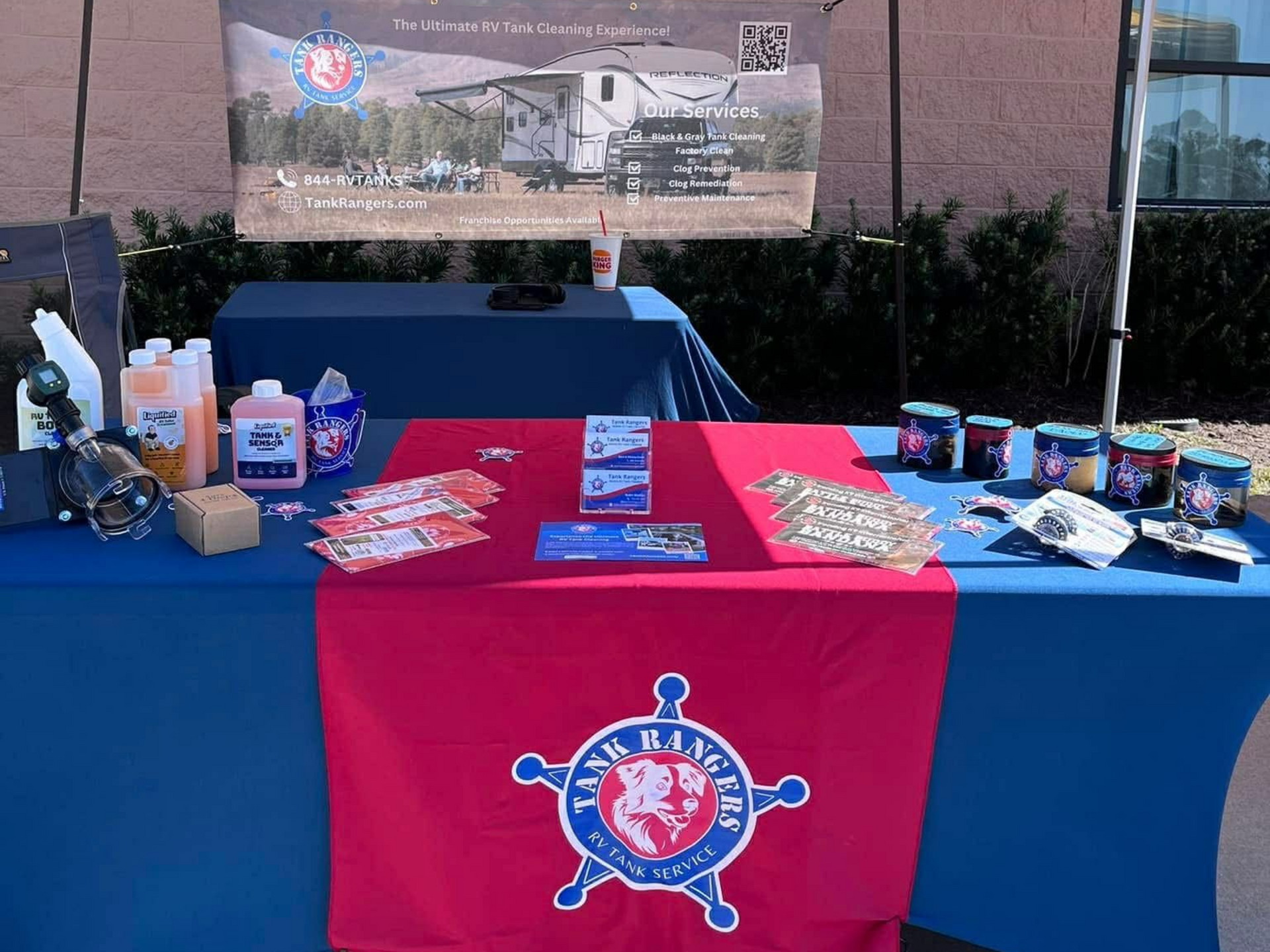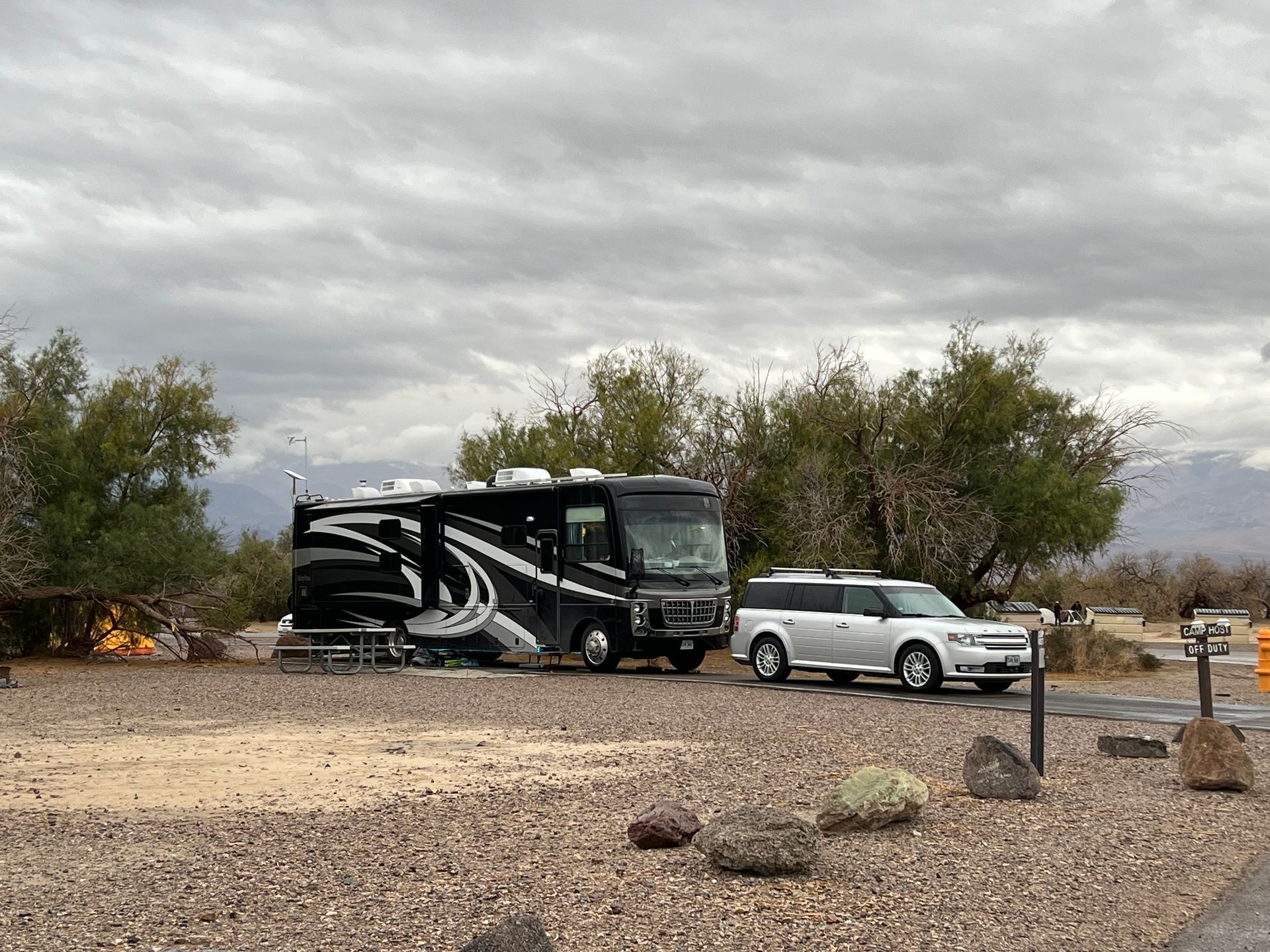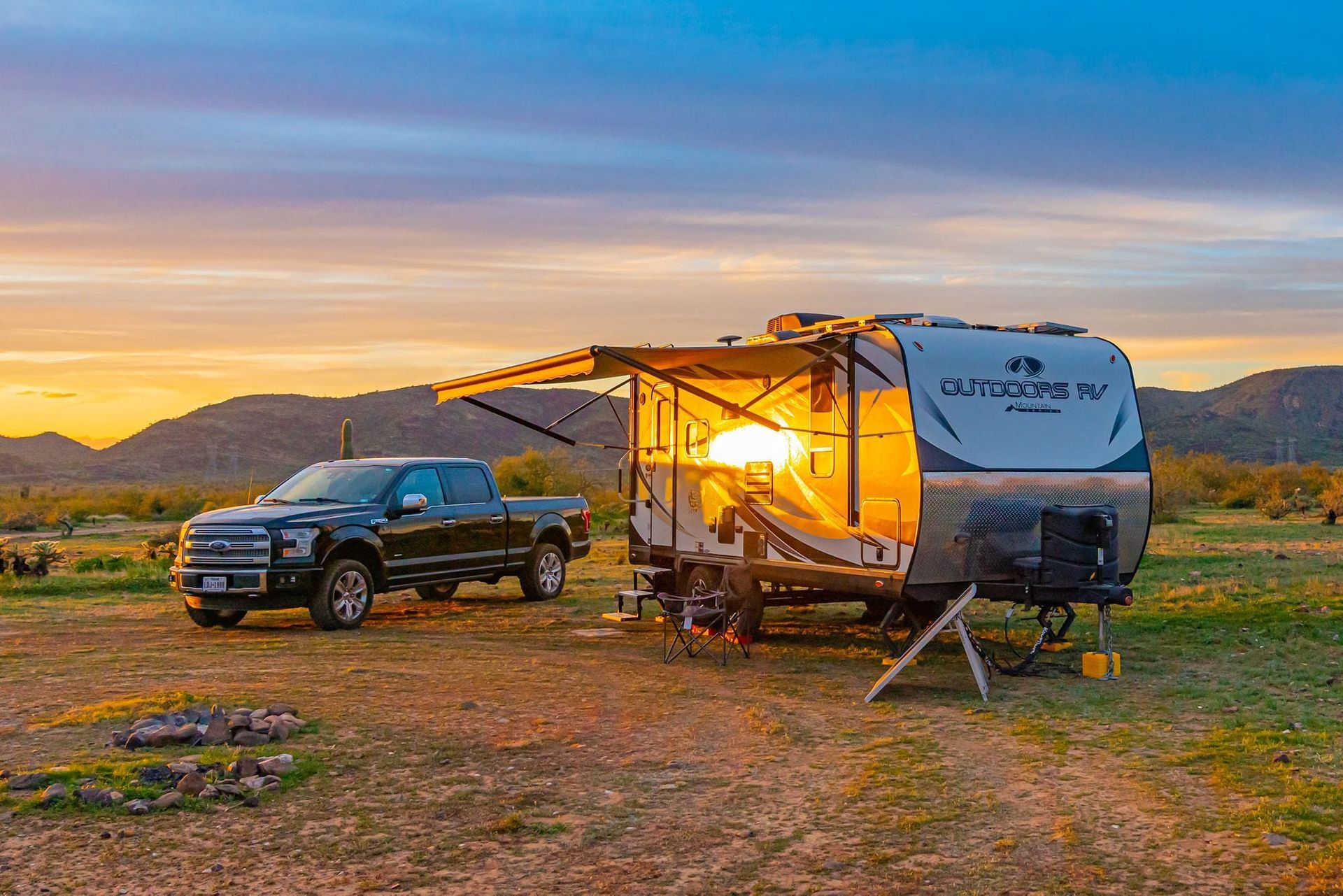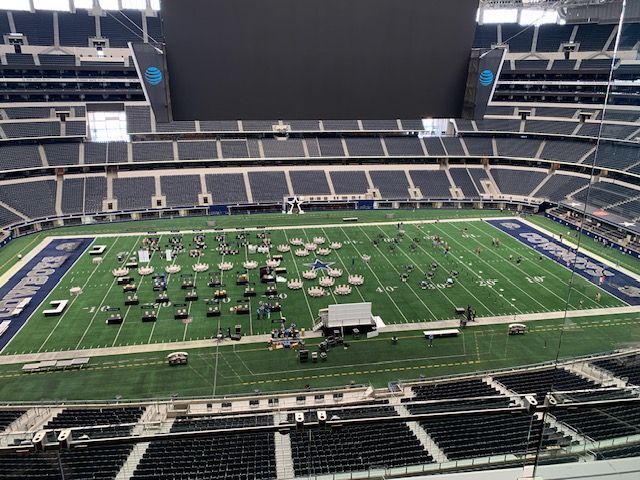Campsite Setup in 3 Easy Steps
Doug S • April 12, 2025
Ok, I won’t lie – setting up a campsite is more than 3 steps but, hey let’s look at the major steps. First, you have to 1) get backed in (or pulled through the spot), 2) unhitched and leveled, 3) utilities hooked up and slides out, and then enjoy!
Getting settled into a campsite really isn’t terrible and is as much work as you want to make it . Sometimes we throw out the welcome mat at the bottom of the steps and call it done but other times, we go all out: grill, propane fire pit, screen porch, move the table, put up lights, the whole 9 yards.
Step 1, Get Parked & Leveled (if doing it manually)
The very first step after you make it to your magical campground destination is getting settled into your spot. This can be a spot that you have to back into or maybe you decided to take it easy on yourself and got a pull-thru spot.
Unfortunately for pictures, I skipped ahead to where we were already parked. Bad for this article, but I was kind of focused on getting safely parked! You can learn more about backing in and parking in this blog.
Getting parked isn’t really that difficult , but there are a couple of things that you should do at each campsite. The first thing that we do is walk the campsite. Here we’re visualizing where we’ll park the camper so that electric, water, and sewer all reach. Scope out where your slides will go, where the power pedestal is and all that jazz.
Next, the perfect parking job starts with the proper approach . I have been noticing recently that I don’t quite pull forward far enough and my wife reminds me to pull a bit further ahead. Pulling far enough forward gives me a nice clean line to get back into the site. As I’m about far enough ahead, I’ll do what’s called “ the scoop“ where you pull out from the site a bit and then back slightly toward the site to get the tail of the camper lined up to the site’s entrance.
Let’s start with us back in our spot:
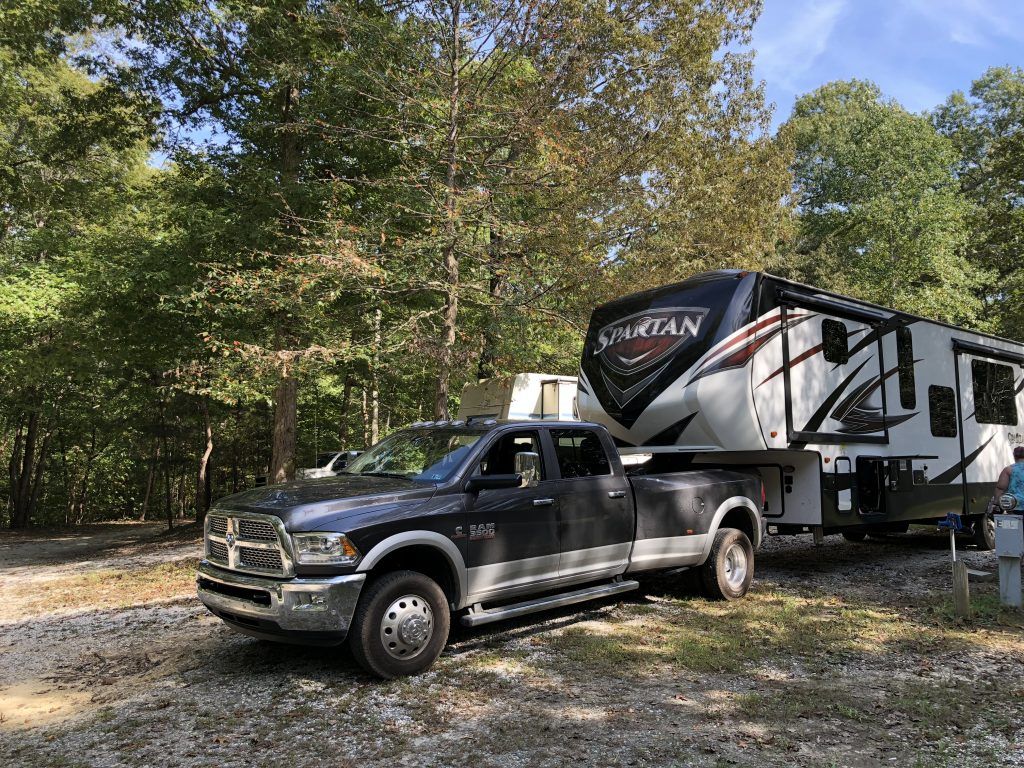
If you don’t have the sweet nectar of the gods that is an automatic leveling system, now’s the time that you’ll get the camper leveled . Use a level to determine how far off level the site is from side to side and put blocks under the wheels ( preferably LynxLevelers! ) to raise the low side.
I consider chocking the wheels as part of the parking process. It’s just that important. DO IT FIRST. DO IT ALWAYS!
We chock the wheels in the front and the back . Some people like to really set the chocks by putting pressure on both by pushing back on the rear chock and drifting forward onto the front chock or hitting them with a mallet.
Step 2, Unhitch and Level (with a leveling system)
Next up, we unhitch. First things first, disconnect the break away cable and the trailer’s umbilical cord .
As you can see, I connect my breakaway cable to a corner tie down point. I don’t like attaching it to the hitch
– partly for the principal of the idea but mostly because it’s an ugly stretch of the body into the truck bed to hook anywhere on it! BUT, be careful if you use the corner
: make sure that you have a long enough breakaway cable and that nothing can snag it. I snagged it once and it was the pits!
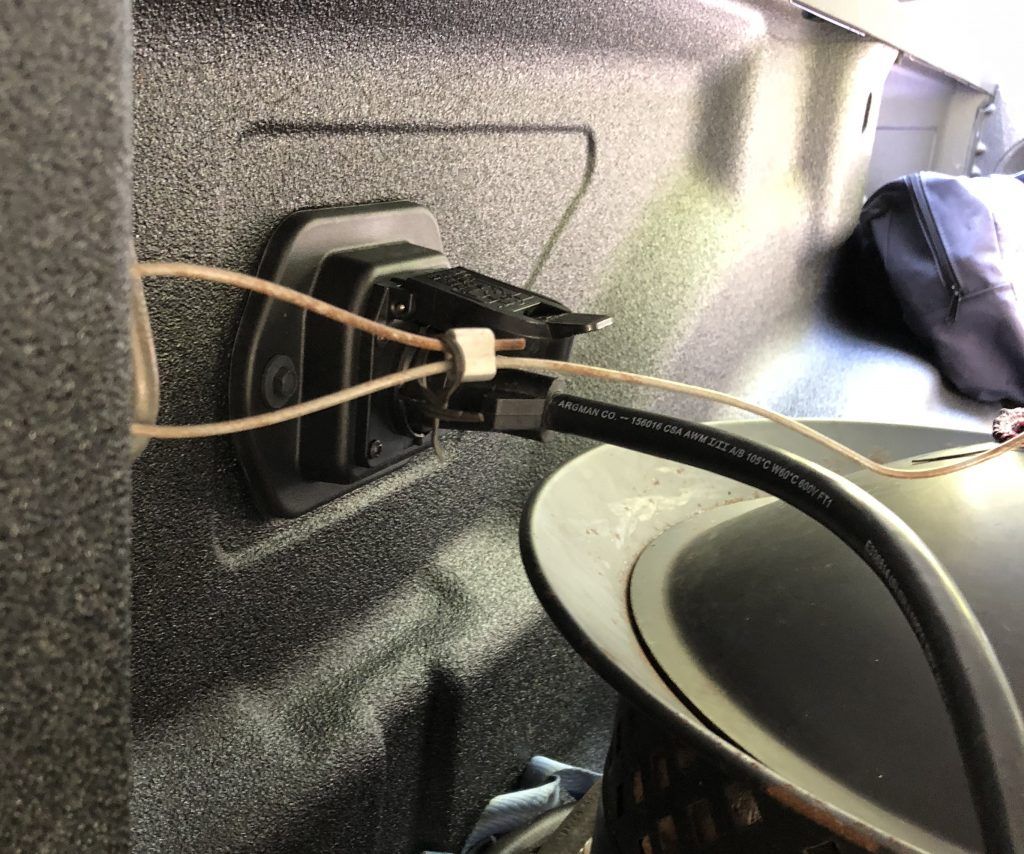
Once disconnected, I like to tidy my cables up in the pin box. With kids, I always worry that they’ll muck with them. Out of sight/out of mind.
Next up, we add boards and LynxLevelers
under the landing gear. We do it to reduce the extension of the legs and theoretically to make the camper more stable
.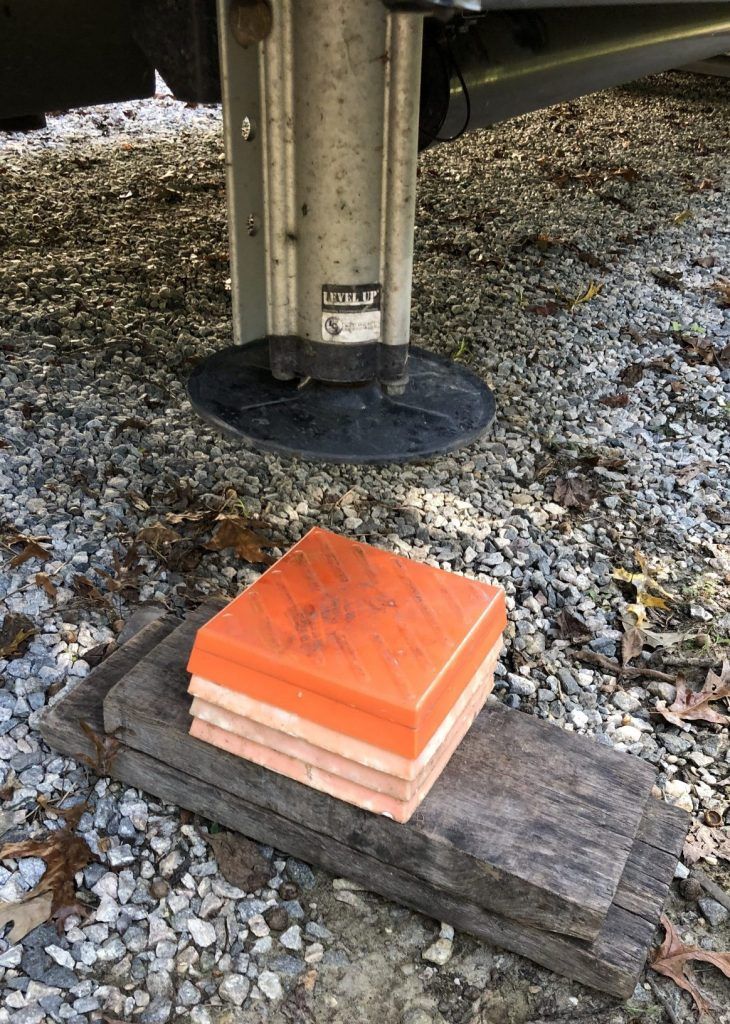
So now, raise the front of the camper up so you can unhitch
. If you have a leveling system, use that; if you don’t, your landing gear will have a switch to raise the nose of the camper.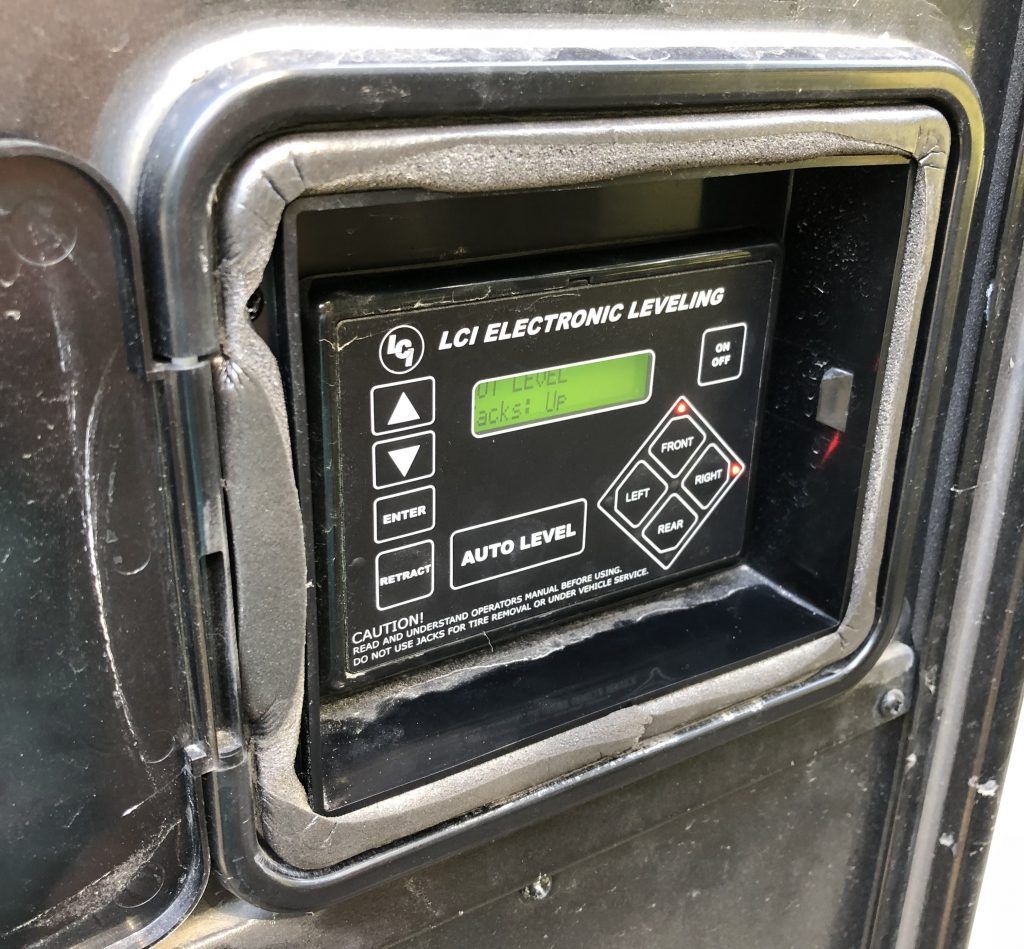
Well wait, the new
2018 Ram
came with the rear auto-leveling suspension and I always forget that I should disable it before taking the weight off of the truck bed. So, Settings –> Suspension –> Tire Jack Mode
and check the box
.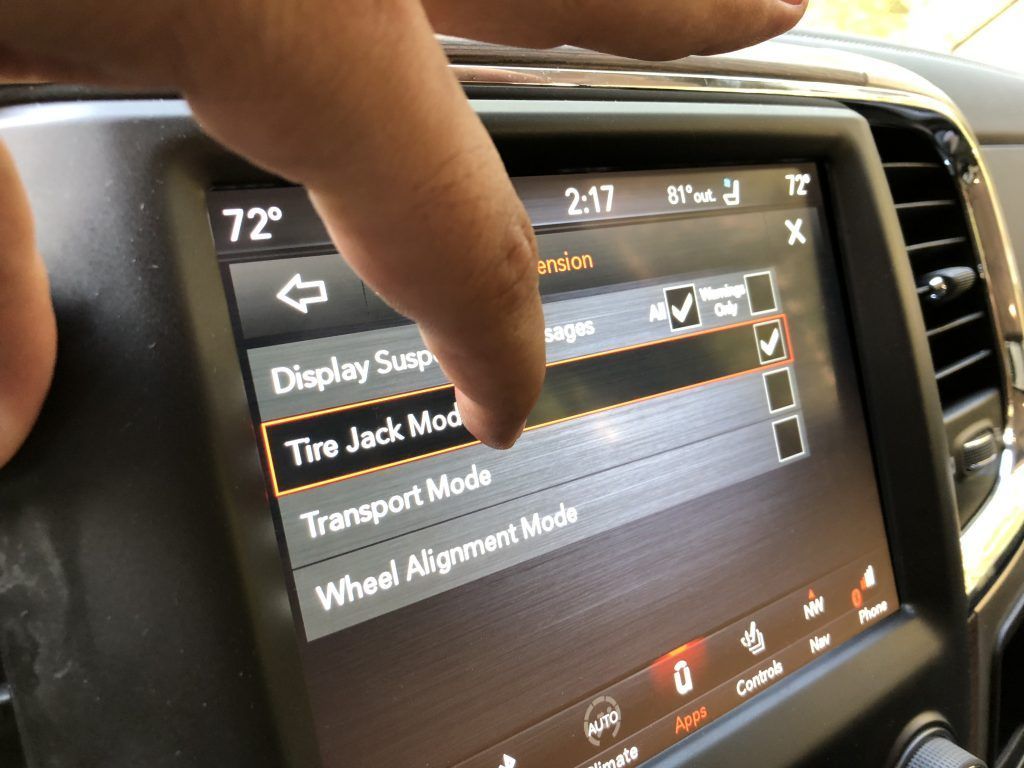
Ok, we’re ready to go. Lower the landing gear onto the blocks
and lift the camper off of the truck.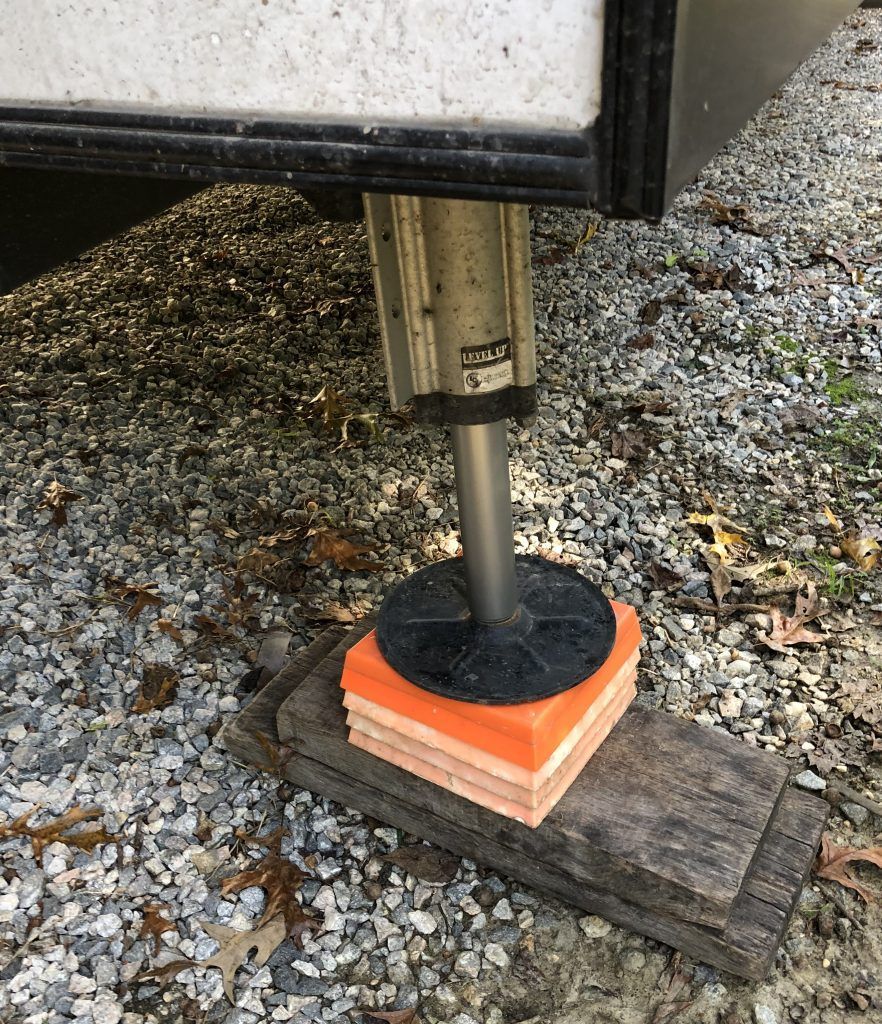
My wife has figured out the sweet spot for raising the camper off of the hitch
. You have to have the weight off of the hitch but not pulling up with the king pin.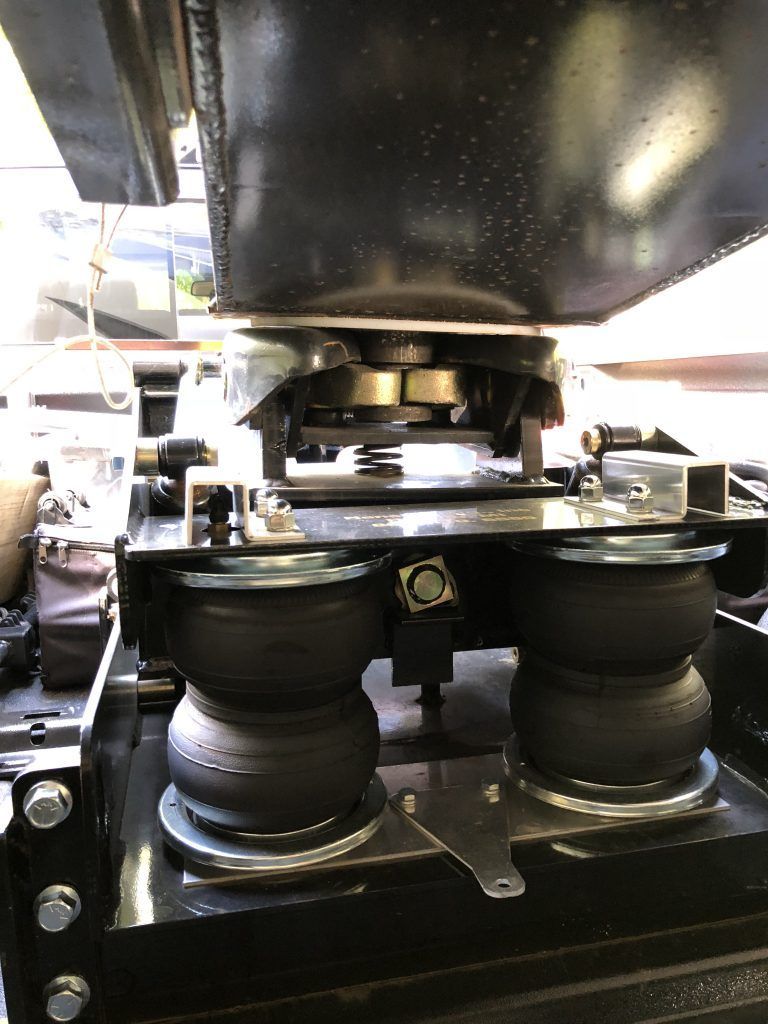
However you unlatch your hitch, do that now.
For me and the Trailer Saver
, it involves pulling a pin and using a piece of pipe to unlatch it.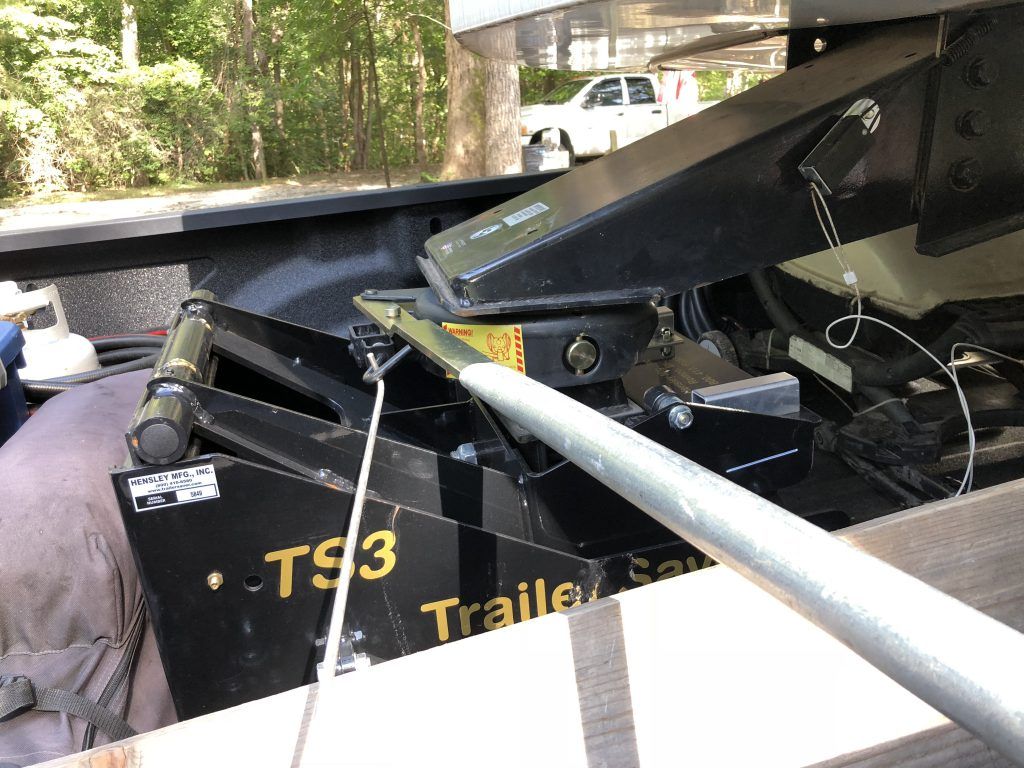
Here’s the hitch in the locked-open position
. I’m ready to drive the truck forward and separate from the camper.
And we’re off.
Do you see those air bags? This Trailer Saver TS3 hitch
is AWESOME!
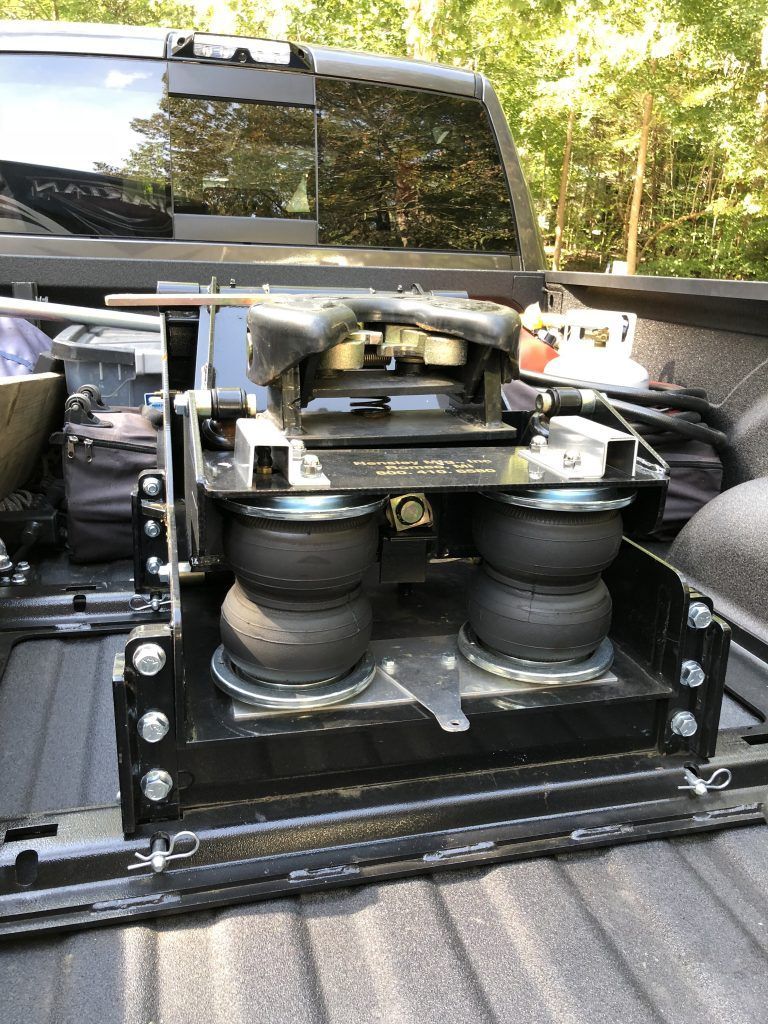
Make sure you pull completely out from under the camper
(especially with the LevelUp leveling system as it can lower the nose of the camper to get level).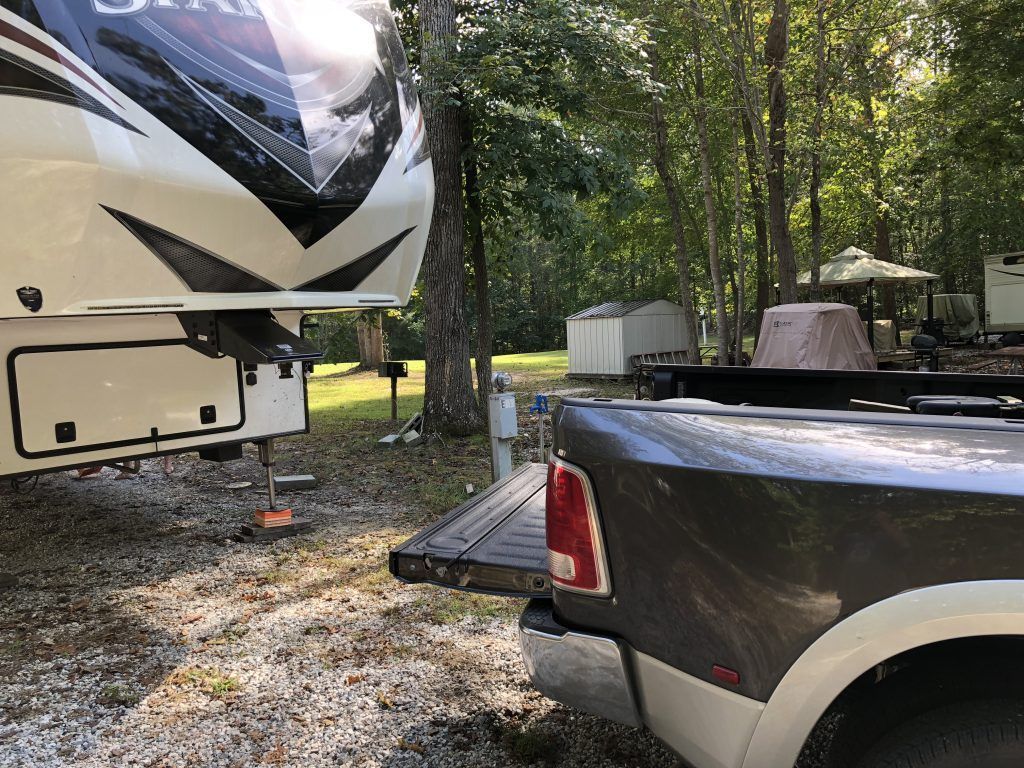
If you have an automatic leveling system, it’s time for leveling
. As we do with the front landing gears, we add blocks under each of the leveling system feet. Here my daughter is positioning the blocks under the leveling foot
.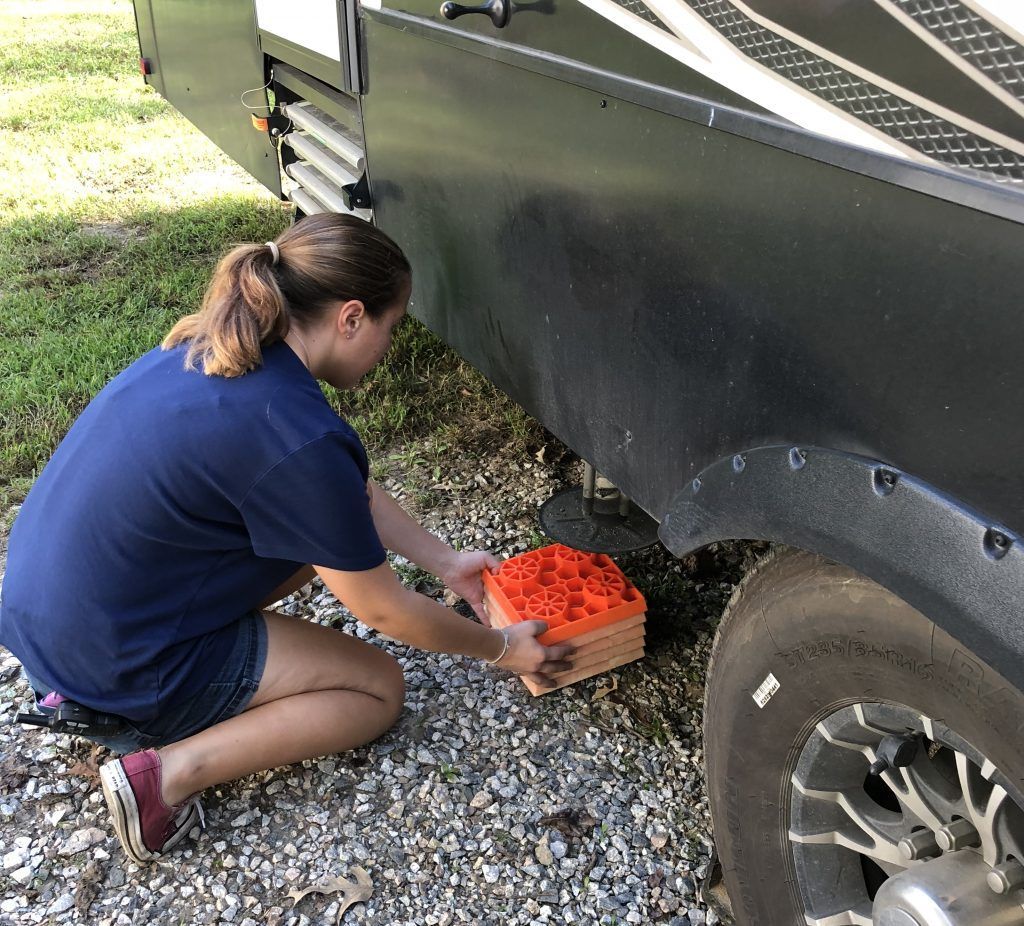
Pushing the “autolevel” button and let the computer do its thing.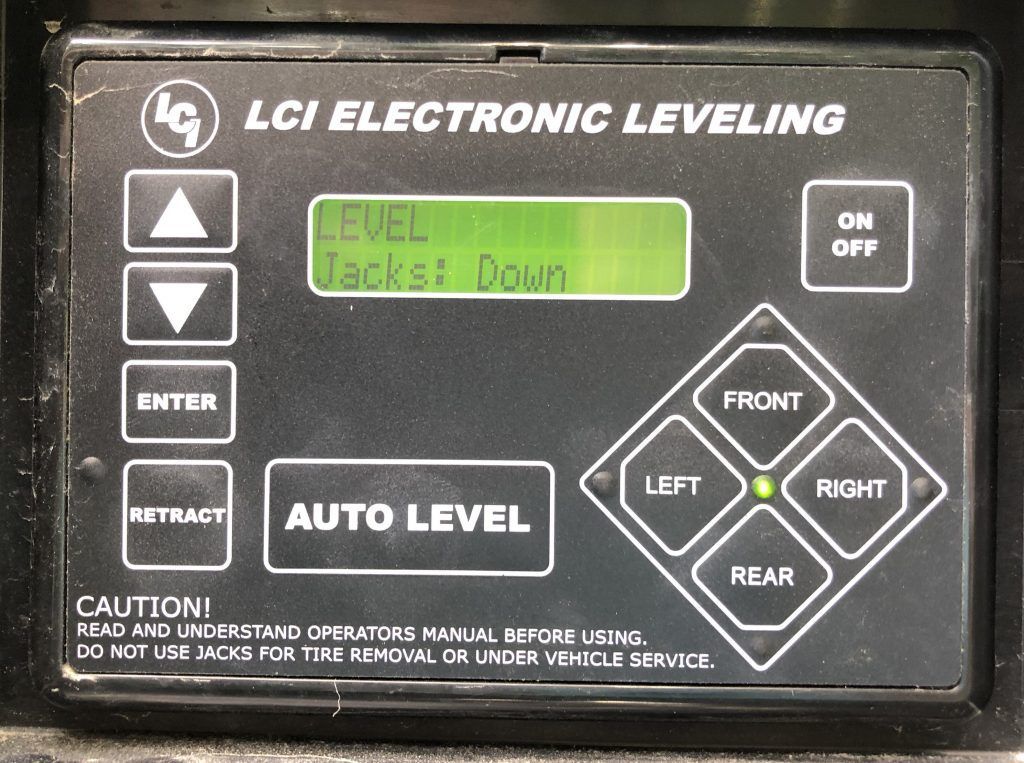
Step 3, Connect Utilities and Slides Out
When connecting electric, make sure the breaker is off before plugging in . The outlet can arc and weaken both the receptacle and char your cord, shortening both of their lives.
However, the absolute most important part of connecting electric is ensuring that the
electrical outlet is safe
for your camper (and you!)
. I never plug in without my EMS
and you shouldn’t either. If you can’t afford an EMS right now, at least
test the outlet
with a
multimeter
.
Water is next. I connect a bit of hose to the spigot and then my 4-way manifold (which I’ve actually recently switched to a 2-way wye splitter). I have the bit of hose because I’ve come across campsites with the spigot incredibly low to the ground (or even below it, I’m looking at you Ramblin’ Pines) where the manifold wouldn’t fit.
It’s not pictured, but I also have an in-line water filter
. For now, it’s an inexpensive
Camco
filter but I’ll soon upgrade to one from the
RV Water Filter Store
.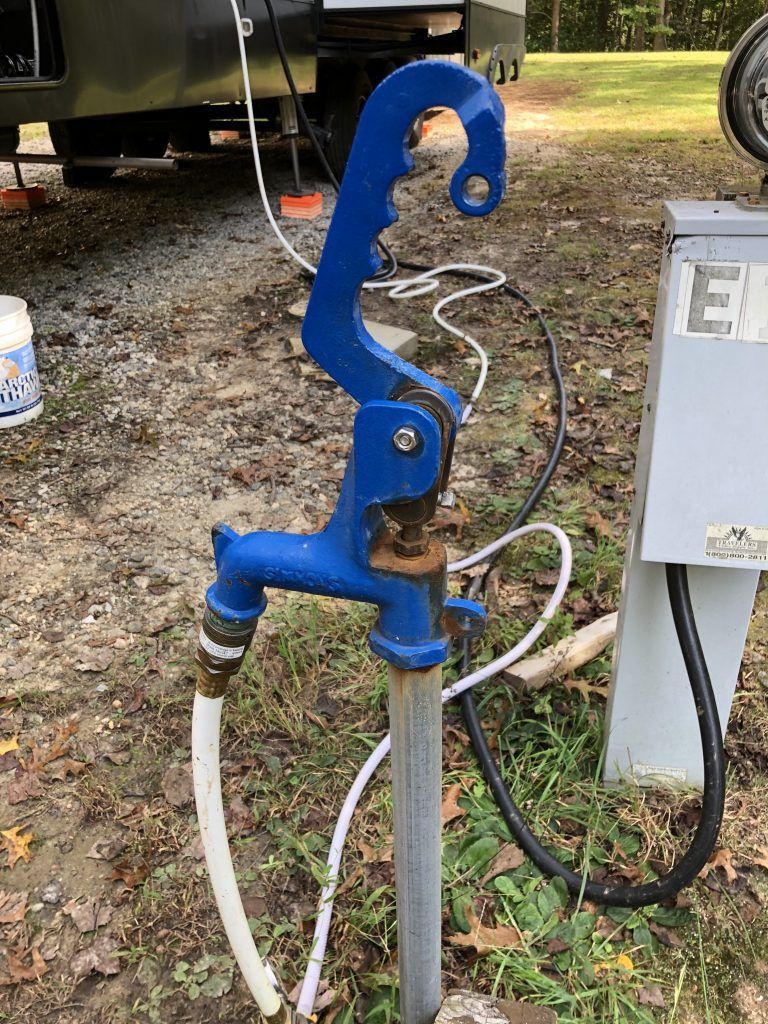
And then ewwy,
time for sewer
. It’s easy with just one sewer outlet but takes a little more hose and accouterments
if you have 2 outlets
.
Slides out, steps down, and welcome mat out!
It’s time to enjoy your rest and relaxation. Build a fire, crack a brew, or do whatever is you do to relax and unwind.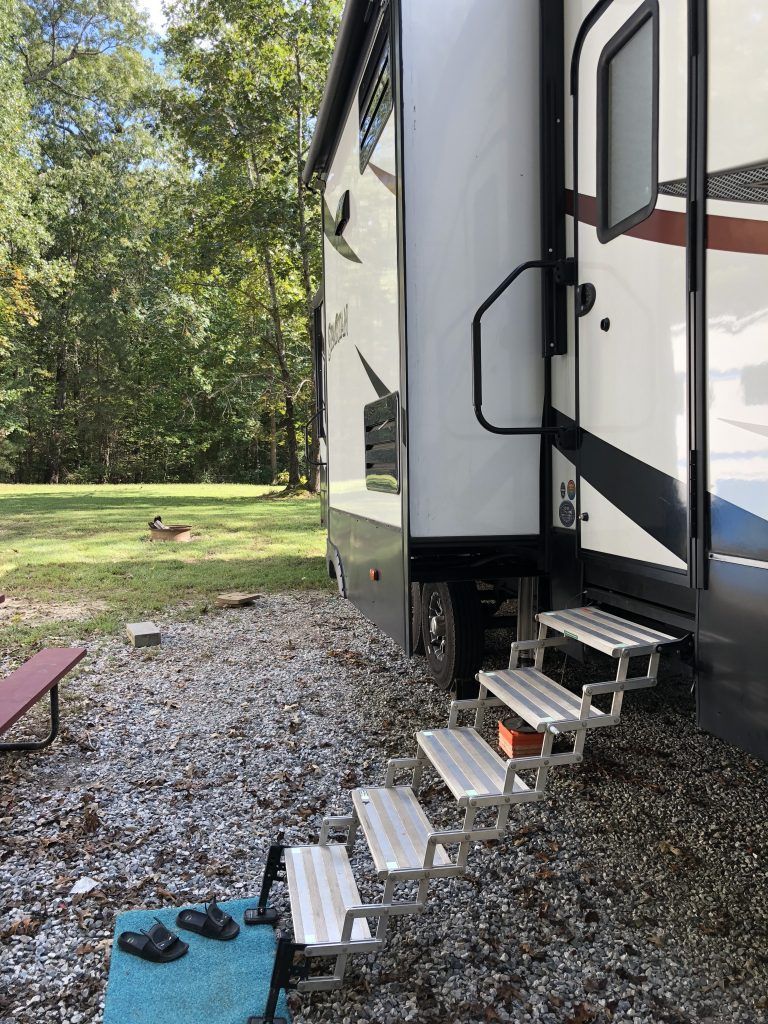
Voilà, You’re Done!
So there you go… setting up camp in 3 easy steps . Well, “three.”
Of course, it’s now up to you with how much personalizing the site you want to do. Maybe you put out lights, or a sign (we do! my wife makes some awesome Traveling Creations), or grill(s), or hammock, you name it. It’s your space for a spell, might as well enjoy it!
—
Last note, the photos from this post were our setup at Williamsburg Thousand Trails . Spoiler alert: it’s a nice park with super friendly staff.
Other blogs you might like...

